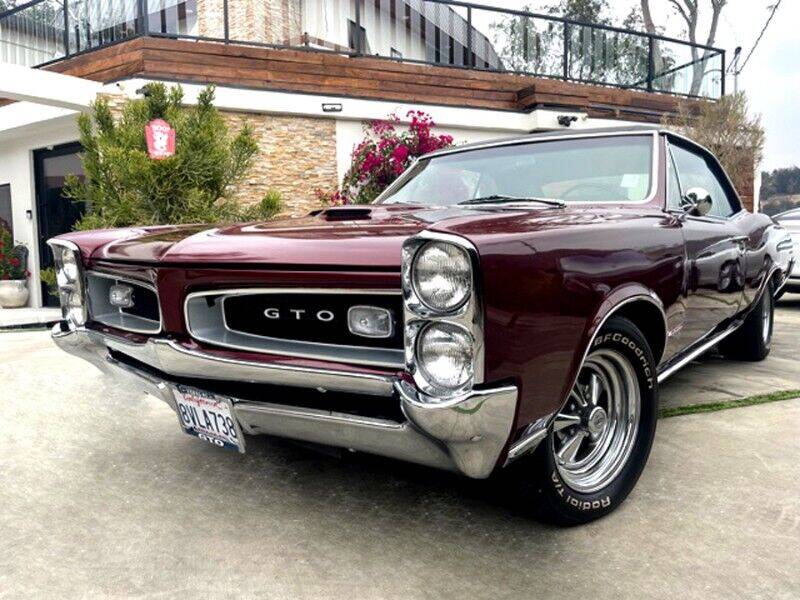
Pontiac vehicles are American automobiles which are owned and maintained by General Motors. They were first manufactured by General Motors' Pontiac Motor Division. General Motors produced and commercialized Pontiac cars from 1919 until 1973. Pontiac cars still enjoy popularity in many parts around the globe. This article discusses Pontiac’s historical background and some of its most beloved models. Continue reading to learn more about Pontiac, and why these cars are so special.
General Motors
Pontiac, which has a long history selling high-quality cars is being retired from production. Last year, Pontiac had only one model roll off its factory line. The company's era is now over. It has ceased to be a leader in speed, performance, and sex appeal. Pontiac will cease to exist by 2010.

Silver Streak
From 1935 to 1956 Silver Streak Pontiacs could be identified by the parallel ridges on their trunk and hood. These ridges were similar to the suspenders worn in an older man's closet. Pontiac's styling was unique, but the car had its flaws. Here is a brief history about the Silver Streak. Pontiac began making more modern vehicles following the war.
G-body models
The Pontiac G body models were a classic and boxy design in an era when boxy was fashionable. G-body models are so practical that even wagon enthusiasts have developed a cult following. G-body models are also very easy to modify, and the extensive aftermarket support for these vehicles is unmatched. Here are some ways you can improve your G body. These are some tips to increase the performance of Pontiac.
1973 Redesign
The Redesign of Pontiac cars in 1972 resulted in a massive increase in production of full-size vehicles. The Pontiac Catalina produced nearly the same amount as the 1971 Pontiac full-size models. Also, Bonneville and Grand Ville saw significant gains. The redesign of the 1973 Pontiac car lineup saw significant changes to the full-size line. The new car's face featured a large, energy-absorbing bumper as well as a full-width grille and horizontal bars.
1980s body styling changes
Pontiac became more focused on luxury and convenience than ensuring roadability as the market matured for midsize vehicles. The Grand Am was a part of a revamped lineup with "Colonnade" styling. The Grand Am was billed as combining Trans Am performance with Grand Prix luxury. Bill Collins, an assistant chief engineering engineer for the original GTO, collaborated with John Seaton to design the Grand Am. John Seaton is a chassis wizard. Collins wanted to replicate European sedans.

Last model to be sold in 2010
After more than 80 years, the Pontiac brand has come to an end. In the last few years, Pontiac became unprofitable. It sold rebadged Chevrolets for a fraction of its original price. Although Chevrolet was able to compete with the rebadged cars, its quality fell behind that of its competitors. Pontiac was eventually canceled. In the United States, the last model of Pontiac cars sold in 2010 was the Pontiac Vibe.
FAQ
Does it matter where I go to college?
You're wrong. There are no differences between colleges when it comes to getting into the automotive industry. But, there are better programs at some schools than others. Look elsewhere if you want something more niche.
What is the difference in a mechanic and an auto technician?
They are both similar, but not identical. An automotive technician maintains cars, while a mechanic repairs them.
A mechanic must have good manual dexterity and be able to perform simple tasks quickly. A mechanic should also be able accurately diagnose and repair problems.
An automotive technician is required to have more technical knowledge than a mechanic. They need to be able use tools such drills and wrenches, and read blueprints.
They should also be capable of safely performing complex procedures. They need to be familiar with various types of engines and electrical system.
They must also be able to understand how various parts interact with each other.
The result is that a mechanic often earns less than an auto technician. Both careers have many options.
How can I prepare myself for a mechanic apprenticeship
Understanding what you're getting into is crucial. You must understand the workings of cars. You will be able to know exactly where to begin when you arrive at the garage for your first day.
You should also know how to fix common problems such as tires or broken lights.
You will be able to diagnose and repair problems yourself.
You'll also need to know how different parts fit together to put them back together again.
Finally, be proficient in using tools safely and efficiently.
All of these factors will allow you to become a skilled mechanic.
Statistics
- 52% of Mechanics in the United States think their salaries are enough for the cost of living in their area. (indeed.com)
- There were 749,900 jobs available for automotive service technicians and mechanics in 2016, which is expected to grow by six percent through 2026. (jobhero.com)
- Apprentice mechanics earn significantly less hourly than mechanics who have completed training, with a median wage of approximately $14.50 an hour, according to PayScale. (jobhero.com)
External Links
How To
How to Become an Automotive Technician
Automotive technicians provide repair and maintenance services to vehicles. He/she works at automotive shops, garages or service centers. Customers can rely on him/her to fix their cars, trucks and motorcycles. An automotive technician must be able to diagnose problems and make repairs quickly, safely, accurately, and efficiently.
An associate degree should be obtained from a vocational school if you wish to work as an auto technician. After completing this program, he/she must pass the National Institute for Automotive Service Excellence (ASE) certification exam. ASE stands for American Society of Mechanical Engineers. The ASE certification test consists of two sections. One section tests mechanical knowledge; the second section tests practical skills. You will need to attend an authorized testing site in order to pass the test. These locations can be found online or at your local auto dealer.
Before becoming an automotive technician, a candidate must pass the test. It varies depending on the location of the applicant. Some states require applicants to take a training course while others allow them the freedom to study on their own. Some states permit technicians to work immediately after they are granted their license. Others require them to wait at least six consecutive months before they can be licensed.
To get started as an automotive technician, a person should apply to a local automotive dealership. Most new employees begin as apprentices once they are hired. Apprenticeship programs last about three years. This is when a student can learn how to do basic repairs such as changing oil, adjusting brakes and replacing tires. Advanced repairs can be done by some students, including replacing shocks, installing air filters and repairing engines. Many schools offer classes during regular hours. Some schools offer evening classes, however.
Once a student completes his/her apprenticeship, he/she becomes a journeyman. Journeymen generally spend four- to five decades learning how to fix major systems like transmissions. They learn how to do complex repairs such as remanufacturing engines, rebuilding transmissives, and troubleshooting electronic components. Because they have a good understanding of the job and what customers expect, many employers prefer to hire journeymen.
Candidates who pass the required exams are eligible for a license. According to Bureau of Labor Statistics, there were almost 1.7 million available jobs in the automotive mechanic field in 2010. This number is expected to increase by 18% between 2009 and 2020. A candidate who plans to open a shop should expect to spend many thousands of dollars on equipment and supplies.
There are many factors that affect the salary of an automotive technician, such as where they live, their education and experience. A jobless person could make an average of $20,000 annually. A high school diploma is all that's required to earn approximately $21,000 annually. An associate's degree earns approximately $24,000 annually. A technician with a bachelor's degree earned approximately $27,000 annually. A master's degree earns around $32,000 per a year. Salary increases can be common. A professional who earns less that $30,000 today could reasonably expect a $40,000 increase in the next few decades.